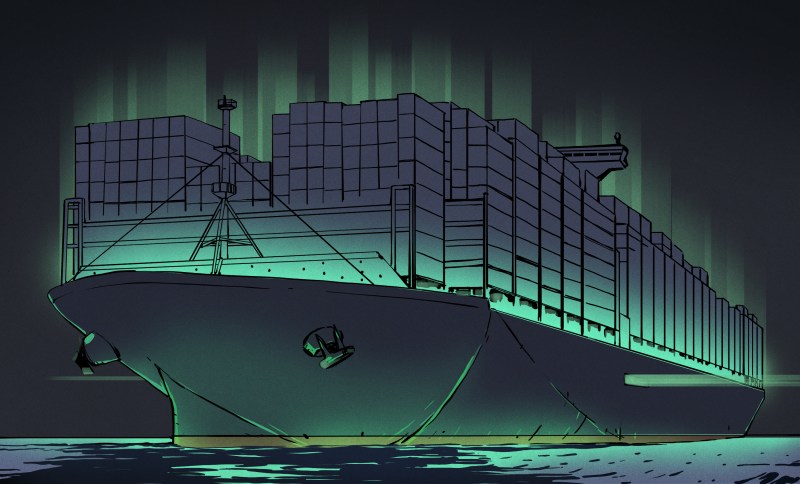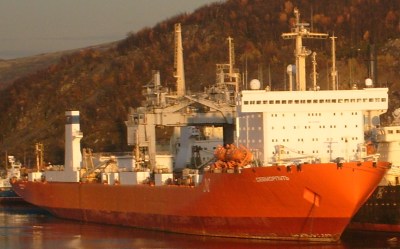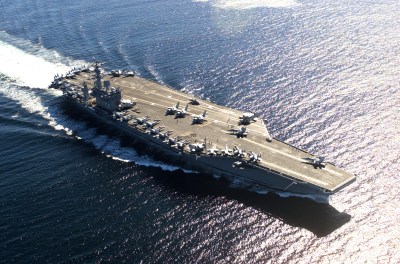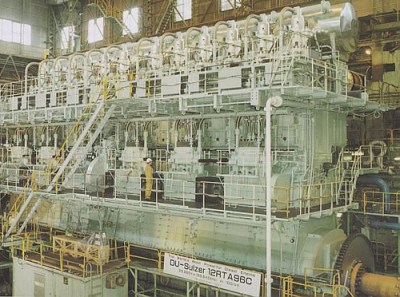
The transport of goods with cargo ships and especially container ships is the backbone of today’s economies, with about 90% of non-bulk cargo transported with them. This is in addition to the large number of oil tankers and LNG carriers. Unfortunately, due to their use of diesel engines they are also responsible for about 3.5% of the world’s CO2 emissions, in addition to 18 – 30% of nitrogen oxide and 9% of sulfur oxides.
Although the switch to low-sulfur diesel (ULSD) and the use of speed limits has reduced some of these pollutants, the shipping industry sees itself faced with the necessity to decarbonize in order to meet the obligations of the Paris Agreement. This essentially means finding a way to switch from diesel engines to an alternative which has comparable or better fuel costs, produces no or almost no pollutants and will not negatively affect logistics.
As a highly competitive, cut-throat industry, this does seem to leave shipping companies backed up against a wall. Yet an existing, proven technology just so happens to exist already which can be retrofitted into existing cargo ships.
SHIP IT BIGGER, NOT FASTER

Since most cargo is not of the perishable type, the main motivating factor behind the shipping industry’s investments has been to carry more cargo with a single ship. During the last decades of sailing cargo ships (iron-hulled sailing ships) that lasted into the early 20th century, they managed to compete with the steam ships of the time mostly on account of being cheaper to operate. The largest so-called windjammer to survive to this day (Moshulu) was constructed in 1903 in Scotland.
With steam engines quickly losing ground by the 1960s to diesel engines, both in the shipping and rail industries, diesel engines became the workhorses of the modern world, powering everything from trucks to trains to the biggest container ships. At about the same time, the massive leaps in our understanding of the atomic world led to a number of experiments with using a nuclear fission reactor as a direct replacement of the steam boilers of yesteryear.
One of the most famous early nuclear-powered cargo ships was the NS Savannah, which was launched in 1959. As a demonstration vessel with mixed passenger/cargo use, she was however not meant to be profitable. With the far less complicated regulations concerning diesel engines and low diesel fuel prices taking precedence over other considerations, the shipping industry would collectively opt for this propulsion method.

At this point in time, the Russian Sevmorput container ship (launched 1986) is the only active nuclear-powered cargo ship in the world. It is currently used for supply runs to Russia’s Antarctic research stations, alongside Russia’s fleet of nuclear-powered icebreakers.
The new Project 22220 icebreakers feature an RITM-200 SMR (small modular reactor) with a 7 year refueling cycle, similar to the multi-year fuel cycle of the Sevmorput. The elimination of refueling considerations is helpful in this environment, allowing for increased cargo capacity and simplified logistics.
IT’S THE LOGISTICS, SILLY
As alluded to earlier, shipping companies are not interested in risks when they can avoid them. With a mid-century deadline to reach near-zero emissions looming, there is willingness to invest in change, but only so much. This is where radical propositions — such as in this 2018 IEEE Spectrum article on switching to hydrogen and fuel cells — face a very tough sell.
In this article, it is pointed out that a converted cargo ship, filled with fuel cells, batteries and hydrogen storage tanks, could theoretically have enough electrical power to last one trip to the next port. This points at a number of negatives, with the possibility of a hydrogen leak leading to a stranded cargo ship, the need to refuel highly compressed hydrogen at every port, and a large amount of space taken up by the (thick-walled) compressed hydrogen tanks. It is also not a system that’s compatible with turbo-electric transmissions, and would require extensive retrofitting in existing cargo ships.
A final nail in the coffin is the lack of refueling infrastructure at ports around the world, and the fact that right now virtually all hydrogen is produced from fossil methane (‘natural gas’) steam reforming and similar sources. Essentially, this transition would be one of many unknowns, high risks, expensive world-wide investments and uncertain gains in the event that it does work out as hoped.
WELCOME TO THE NAVY

Although the shipping industry has mostly opted to go with cheap bunker fuels for its cargo ships, since the 1950s the use of nuclear propulsion has become an integral part of the world’s most powerful armed forces. While a diesel submarine is useful, it cannot stay submerged for days on end and needs to refuel weekly instead of once every few decades. Similarly, CATOBAR-style aircraft carriers require both the power and elimination of refueling that could otherwise make a conflict rather embarrassing when one’s prized aircraft carrier runs out of fuel.
If adopted to a cargo ship context, and assuming marine reactors like those used in Russia’s RITM SMRs with 20% low-enriched uranium-235 (compared to >90% for some US naval reactors), the logistics of refueling would be limited to a single refueling stop roughly once every seven years, during which the fuel would be swapped. If one were to use a molten salt or pebble bed reactor, refueling could be done more flexibly, with less time spent on the process.

Other advantages of the use of nuclear propulsion is that since the fuel has a very high power density, no fuel tanks are needed. Instead the reactor along with a steam turbine could replace the building-sized diesel engine in container ships, like the Wärtsilä RT-flex96C with a height of 13.5 meters and length of 26.5 meters. The nuclear retrofit would thus combine engine and fuel in the same space as the engine block originally, allowing for increased cargo capacity.
Due to naval reactors having been in use by various nations in a variety of scenarios since the 1950s, the risks and benefits are both well known, making them as much of a known quantity as the diesel engines that they are set to replace.
TIME TO STEP ON IT
The past few years, the use of nuclear propulsion has found new voices within the shipping industry. As noted by people in the industry, a major hurdle is the lack of legislation by the International Maritime Organization (IMO) in this area, which at this point mostly considers nuclear propulsion in the context of military vessels. This might change quickly, however, as noted by Andreas Sohmen-Pao, chairman of shipping company BW Group. According to him, the benefits of nuclear propulsion are evident, with the low operating costs being the most obvious.
Instead of having to deal with the recurrent costs of refueling, a cargo ship with nuclear propulsion would be effectively free after the upfront investment. With no pollution emissions or fuel costs to consider, this would allow for cargo ships to go faster, allowing for a 50% speed increase in some cases. Or more simply put, assuming a casual three-week shipping time for a container ship from China to the US, a 50% speed increase would reduce that time by a full week.
Economics aside, the fact of the matter remains that the shipping industry has to reduce its emission footprint rapidly. As a risk-averse industry, any changes would have to be gradual and well planned out, with drop-in solutions likely welcomed over revolutionary upsets. Here a solid and proven technology like nuclear propulsion could provide just what is needed. These facts have been recognized by British maritime classification society Lloyd’s Register when it rewrote its rules after feedback from its members. Lloyd’s has stated that it expects to “see nuclear ships on specific trade routes sooner than many people currently anticipate.”
A POTENTIAL SHIPPING REVOLUTION
Depending on how things work out, we may see a shipping industry which not only manages to decarbonize in record time, but also makes the shipping routes faster and more reliable than before. With cargo ships free to travel as fast as the weather and local traffic allow, ordering some widget from the other side of the world might take considerably less time, all without the guilt of the environmental impact that shipping has today.
Then there is the other kind of ‘shipping’, in the form of cruise ships, which are also far from clean, especially when idling in ports. Going on a cruise may seem slightly less decadent if those ships no longer belch out plumes of black diesel exhaust fumes while steaming past idyllic islands.
Here is to the Age of the Atom to conclude the Age of Diesel.
No comments:
Post a Comment